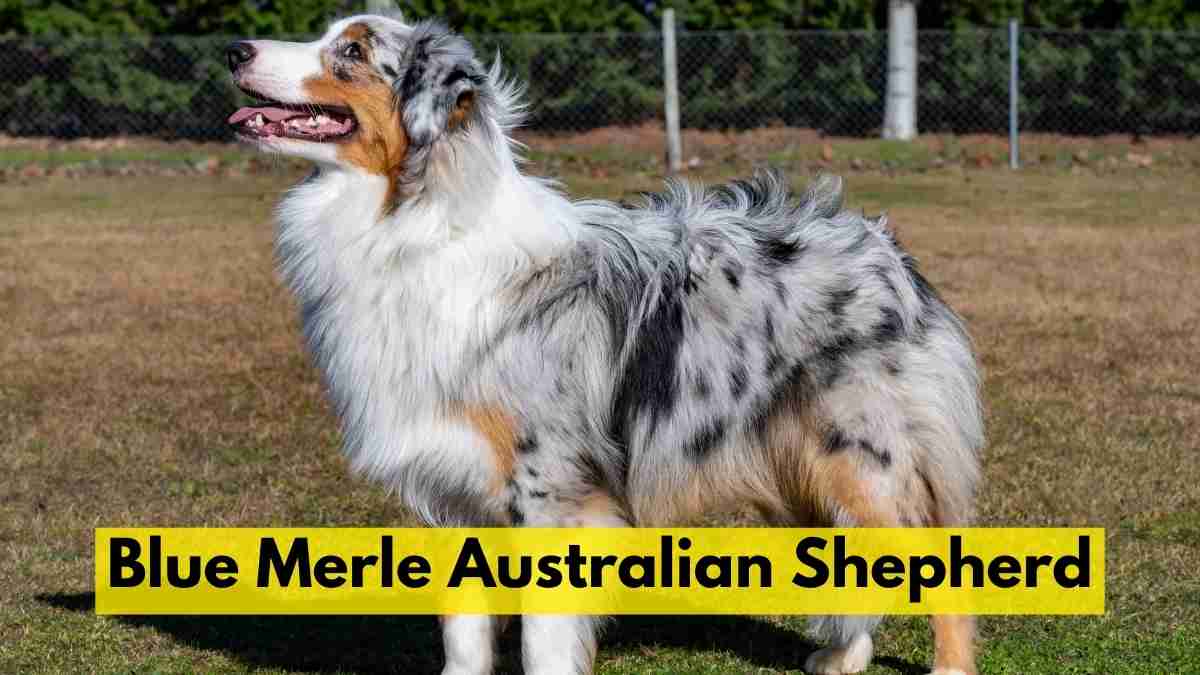If you’re thinking about adding a new furry family member, it’s crucial to conduct thorough research to ensure that the chosen breed aligns with your lifestyle. This is especially true when contemplating adopting or rehoming a Blue Merle Australian Shepherd. Let’s delve into key aspects, from breed characteristics to care requirements.
Table of Contents
Breed Overview
Life Span
Welcoming a Blue Merle Australian Shepherd into your family means committing to a canine companion for around twelve to sixteen years. This longevity underscores the importance of a well-thought-out decision.
Size
Adult Australian Shepherds typically stand between eighteen to twenty-three inches in height and weigh forty to sixty-five pounds. Males tend to be larger than females, and early neutering may influence their ultimate size.
Appearance
Blue merle Australian Shepherds boast a striking multicolored coat, often comprising shades of grey, white, black, and tan or red. Their distinctive markings may include a white bib and muzzle, with colored patches around the eyes. Eye colors can range from blue and amber to brown, sometimes even displaying heterochromia (different colored eyes).
Traits
Known for their high energy levels and intelligence, Australian Shepherds are well-suited as working dogs, often employed in herding livestock. They are trainable and eager to please but require ample mental and physical stimulation. While not excessively affectionate, they are generally friendly and considered good with children.
Health Conditions
Blue Merle Australian Shepherds are susceptible to congenital deafness, possibly linked to the genetics influencing their coat color. Additionally, common health concerns include hip dysplasia, elbow dysplasia, cataracts, epilepsy, and Progressive Retinal Atrophy. Responsible breeders often conduct health screenings to minimize these risks.

Blue Merle Genetics in Australian Shepherds
If you’ve ever wondered about the enchanting blue merle coats of Australian Shepherds, you’re not alone. Let’s explore the genetics behind this unique feature. According to the Australian Shepherd Club of America (ASCA), the merle gene plays a crucial role in determining whether a dog is merle, and it operates as an “incomplete dominant.”
The Merle Gene Dynamics
For the captivating blue merles you see, having just one copy of the merle gene is sufficient. However, things take a different turn when there are two dominant copies, leading to what’s known as a “double merle.” Unfortunately, this scenario comes with serious health implications, ranging from eye defects to deafness. It’s a reminder of the delicate balance in genetics.
Double Merle Concerns
When an Australian Shepherd inherits two dominant copies of the merle gene, it results in a double merle. This genetic makeup is associated with significant health problems. These issues can manifest in various forms, emphasizing the importance of responsible breeding practices to avoid unintentionally promoting health risks in these beautiful dogs.
The Balanced Mix
On the flip side, having two recessive copies of the merle gene produces a non-merle Australian Shepherd. Striking the right genetic balance is key, and having one dominant and one recessive copy hits the sweet spot. This combination results in the much-admired merle coat pattern seen in Australian Shepherds.
Caring for a Blue Merle Australian Shepherd
Grooming
Australian Shepherds have a manageable shedding rate, but regular brushing, particularly during shedding seasons, is essential. Using an undercoat brush helps prevent mats and skin infections by removing dead hair.
Exercise
These dogs thrive on activity, making them well-suited for active households or as working dogs. Committing to at least an hour of daily walks, along with engaging toys and activities, helps channel their energy positively.
Feeding
Due to their active nature, Australian Shepherds require high-quality dog food rich in protein and carbohydrates. Opting for a formula designed for working dogs can be beneficial. Balancing food intake with proper exercise is crucial to prevent weight gain.
Blue Merle Australian Shepherd vs. Blue Merle Border Collie
Differences
Both Australian Shepherds and Border Collies can have blue merle coloring, but Australian Shepherds tend to exhibit it more commonly. Australian Shepherds are slightly larger with a more robust build, while Border Collies often have a leaner physique. Differences in ear shape and coat maintenance also set them apart.
Pros and Cons
Pros:
- Beautiful Coat: Blue merle Australian Shepherds are admired for their unique and aesthetically pleasing multicolored coats.
- Intelligence: These dogs are highly intelligent and trainable, making them versatile for various tasks and activities.
- Loyal Companions: Australian Shepherds are known for their loyalty, forming strong bonds with their families.
Cons:
- High Energy Levels: Their abundant energy demands consistent exercise and mental stimulation, making them less suitable for sedentary lifestyles.
- Grooming Requirements: Regular grooming, especially during shedding seasons, is necessary to maintain their coat health.
- Health Concerns: The breed is predisposed to certain health conditions, emphasizing the importance of responsible breeding and regular veterinary check-ups.
(FAQs)
How much does a blue merle Aussie cost?
The price varies from $300 to $2000, influenced by the breeder’s reputation, health screenings, vaccinations, and additional services like parasite treatment and microchipping.
Is a blue merle Australian Shepherd rare?
While not particularly rare, their unique markings and personality make them stand out within the breed.
What makes an Aussie a blue merle?
Australian Shepherds come in various colors, and the blue merle variety features a distinctive coat with grey, black, tan, and white fur.
What’s the difference between an Australian Shepherd and a blue merle?
The blue merle is a specific color variant of the Australian Shepherd, which can also appear in black, red, tricolor, or red merle variations.
Conclusion
Choosing a canine companion is a significant decision requiring careful consideration. If you are an experienced owner with an active lifestyle, a blue merle Australian Shepherd might be an excellent choice. Their striking appearance, intelligence, and loyalty make them a rewarding addition to the right family. Ensure you choose a responsible breeder to mitigate potential health issues and provide a loving and suitable home for your new furry friend.
You May Also Like:

